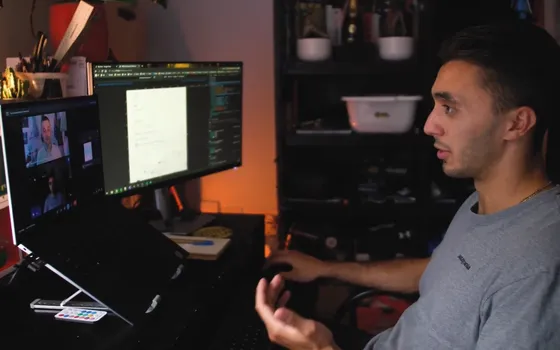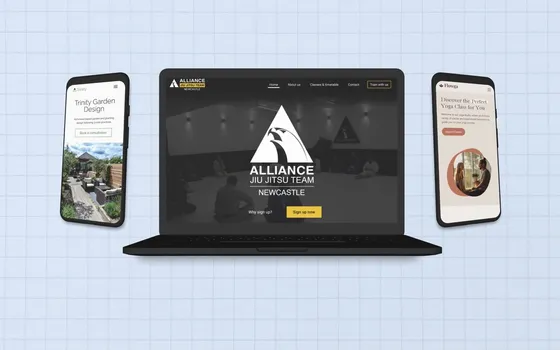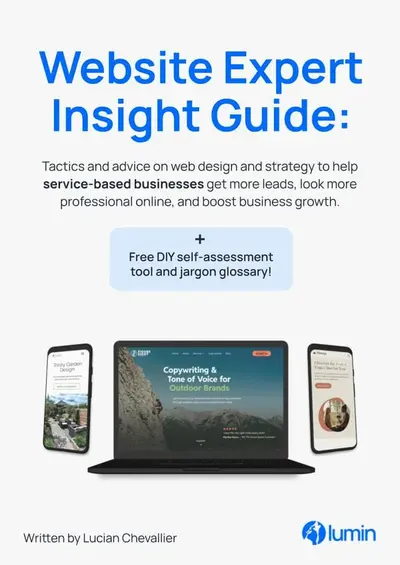Post contents
The world of websites isn’t always an easy one. I’m not trying to scare you (honest), but it’s important to know that there are quite a few mistakes that can be made along the way. One of the biggest is launching your site, sitting down with a nice cuppa, and saying, ‘Job done!’
What a lot of people don’t realise is that design and development are just the very beginning. They’re what needs to be done to get your website online. But don’t stop there. Once your site’s all up and running, you need to focus on actually getting visitors to turn up.
Luckily, there are some smart ways to do this. And the most obvious is SEO.
I’ll be launching a series of articles all about driving traffic to your website, so keep an eye out for those, but today we’ll be digging into the topic of SEO and practical ways you can use it to get more eyes on your website.
The link between SEO and traffic
SEO (Search Engine Optimisation) is the process of boosting your website’s visibility in search engine results (like Google) through technical improvements, content and activities like backlinking (getting reputable sites to link back to yours). It’s deeply coupled with, and is often the main source of, website traffic.
SEO is a way of telling search engines what your website is about, and why people will want to visit it. So when a query is made, search engines can display the sites they think will offer the best experience at the top of the page, making them easier for users to find.
As you’d probably expect, these more visible sites get clicked on a lot more than the ones hidden away at the bottom of the page. In fact, top links have around a 40% clickthrough rate; considerably more than second and third place, which are 18% and 10% respectively.
Ultimately, better SEO = more visibility = more clicks = increased website traffic. Simple!
The different faces of SEO
What comes to mind when you think about SEO? Do you start getting keywords racing through your brain, and begin mentally scheduling your content? Good! That means you’re definitely on the right track already. But SEO is much broader than a lot of people realise.
There are two distinct sides to SEO: the content side which I’ve very briefly touched on above, and the technical side. This is something that often gets overlooked in SEO strategies.
The content side
The content side of SEO is about connecting the information that’s on your website with the information your audience is searching for. It’s very heavily rooted in keywords: the idea is that search engines see a term in a user query, see that same term on our website, et voila! They join the dots, and deliver our websites to those looking for them.
Content-focused SEO may include activities like…
- Keyword research using tools like Google Trends, Adword Planner, and Answer the Public
- Getting a content strategy in place for regular articles or written content
- Targeting specific topics and areas of interest to hit keywords organically
- Programmatically generating content and landing pages for services or products
- Checking titles in search rankings and optimising by looking for those less frequently used
The technical side
The technical side of SEO is a little different; it’s about connecting the experience that your website offers with the experience a user expects to have. For example, pretty much every visitor wants a site to load speedily, and more and more visitors are valuing accessibility and easy navigation. Search engines reward websites that are able to deliver these things.
Technical-focused SEO may include activities like…
- Optimising website performance for faster loading and efficiency
- Improving accessibility (e.g. offering a mobile site) so it works for everyone
- Keeping an eye on performance and issues using Google Search Console
- Using sitemaps to help search engines understand the link between your pages
- Adding meta descriptions to provide visitors with more information and value
Taking a two-pronged approach
Search engine algorithms are massively complex. So much so, in fact, that it’s believed there are more than 200 different factors that Google uses to determine rank! And shockingly, only a small percentage of them are content-based. Google is understood to look at everything from user interaction and brand signals, to backlinks and domain factors.
Taking a two-pronged approach to SEO ensures we’re covering as much ground as we possibly can. And to my mind, it’s the smartest way to optimise for search engines and give ourselves a little traffic boost. It can draw in even more visitors, and make sure those incredible websites we’ve worked so hard to plan, design, and develop really get seen.
When I build websites for our clients, I cover the most important technical aspects of SEO weaved in with keywords in important places on your site. We’ll also work together with one of the copywriters from the Lumin Pack to get some professional copy written for your site. This leaves two jobs unfinished:
- Building reputation and awareness
- Regular high-quality content
Luckily for you, you can get regular, professionally written content for your website from our trusted content partner. You just need to be signed on to one of our growth & support plans. If you have questions you can send me a message here, or, I set a limited number of 2 slots aside every Wednesday afternoon to have free chats about websites or website strategy. You can book one of the limited slots here.
As for your reputation and awareness, that’s all about brand building, growing your authority and carrying out activities like backlinking and guest blog posting. But that’s a topic for another time, perhaps?
This is part of a series of articles all about bringing more traffic to your website. After all, what’s the point of having an engaging, exciting and effective website if there are no eyes on it?
You can find the other articles in this series, but also sign up to our mailing list, The Lumin Letter, to get alerted about when the next article drops so you can start getting more leads through your website. In each letter, you also get 1 strategic insight, 1 quick website tip and 1 bit of visual website inspiration.
- Article categories:
- Website strategy






